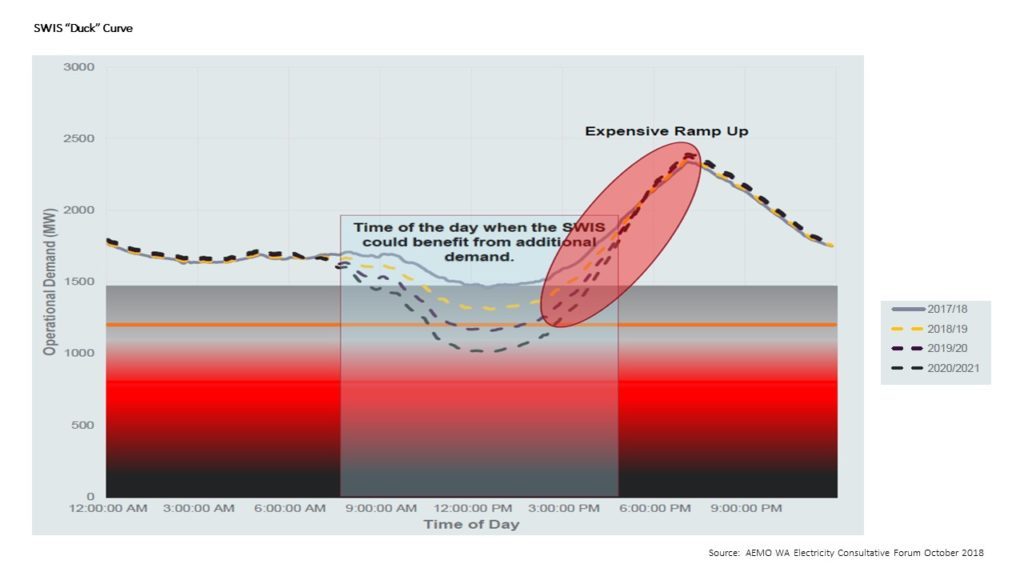- Solar pricing continues downward trend – payback period is typically 3 years or less
- “Duck” Curve: is WA’s grid getting close to peak solar?
- Commercial sized batteries are still not economically viable
Solar installations in WA reached almost 1000MW in 2018 with more than 100MW forecasted to be added in each of the next few years. Prices for solar continue to decline which makes investing in solar a good option for businesses wanting to lower their electricity spend. Payback period is now typically less than 3 years, with most financing options cashflow positive upon installation.
The Australia Energy Market Operator (AEMO) is responsible for dispatching generators and keeping the grid operating in a safe and efficient manner. Recently they have highlighted the increasing “Duck” curve of electricity demand through out the day. In figure 1, the various lines show how electricity demand is relatively flat overnight and into the early morning then starts to decline before picking up dramatically late in the day as both solar PV output declines and underlying demand increases as people return home from work and turn on air conditioning and other appliances.

Prior to the advent of solar, the demand curve would steadily increase throughout the day making it easier for AEMO and generators managed the demand changes. The various lines in Figure 1 show the typical daily demand profile for 2017/18 and forecasts (dotted lines) for 2018/19 through 2020/21. As more solar is added to the grid, two issues are occurring – during the middle of the day, dispatchable generation must decrease to the point where it is inefficient to operate but needs to be operating in order to provide grid support services like frequency control and load following services. Secondly, as the day progresses, and solar PV generation reduces these same generators are called upon to react rapidly to meet the evening demand. Typically, fast response generation is more costly to operate than slower moving generation that is designed run optimally at a steady-state.

Flatten the Duck
Electricity market participants, solar companies and customers will need to work together to find way to “Flatten the Duck” – make electricity usage more consistent throughout the day. The first and best way is to incentivise customers to become more energy efficient and to decrease demand during peak periods.
Secondly, shifting the amount of solar PV generation away from the low value middle of the day to help meet evening peak demand. This will require energy storage – typically batteries. However, based on the current costs, batteries are not economically viable and in most cases for commercial customers not available in large enough units.
Prices for batteries have reduced dramatically over the last few years but will need further price falls in order to be viable. Other factors that could make batteries an option are: the cost differential for electricity between low and high demand periods will widen and as the technology develops, distributed batteries will be able to provide grid frequency and load following services which will be paid for by the market operator. Change Energy envisions working with customers to combine solar and battery installations into virtual power stations to unlock value in the electricity market that will increase the return on investment of these assets.

